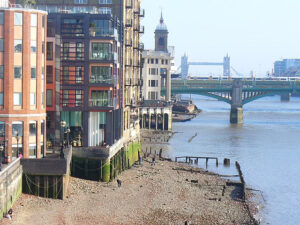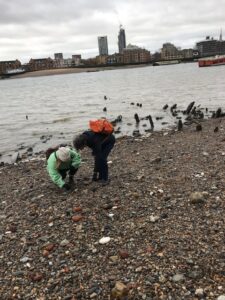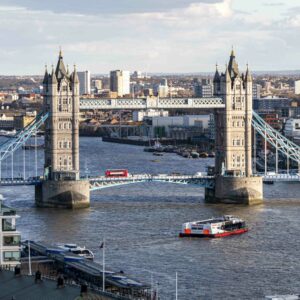For centuries Londoners have been scouring the banks of the Thames. In times gone by children would scavenge at low tide, desperate to find things that could bring in an extra penny or two to the household income, including coal, rope and nails. Now we have keen enthusiasts desperate to find clues to the past or maybe a piece of Roman statuary, a gold horde, or another Battersea shield. It has an official title – mudlarking – and indeed until lockdown 2022 you could apply for an official permit to go down onto the foreshore at low tide and investigate what has been washed up by the day’s high tide.
Sadly, currently no more mudlarking licences are bring issued, due to a fear that too much is being removed and numbers need to be more strictly controlled. But you can still go down to the water’s edge to try your hand at this fascinating hobby, under the watchful eye of the staff of the Thames Explorer Trust. Remember that the Thames was home to thriving communities of watermen, lightermen, stevedores, dockworkers, sailors, merchants, fishermen, fishmongers, oyster wives, shipbuilders and shipbreakers, so there is plenty of scope for discovering something interesting! There is over 2000 years of history awaiting you.

There are rules about reporting your more interesting and ancient finds to officials at the Museum of London and strict rules about EYES ONLY unless you have a permit. No digging, scraping or use of a metal detector is allowed. Mudlarkers prefer to gather on the north shore of the river, making the most of the fact that this was the area more densely populated from the Roman period. Their finds have included colourful pottery sherds and white clay pipes, as well as coins, buttons, buckles, jewellery, gaming pieces, bottles and shoes as well as shards of
pottery such as Roman Samian ware or 18th century Chinese porcelain, early and late stoneware and Victorian transferware.

Why is it so addictive as a pastime? There is always the thrill of what you might spot – that previously undiscovered treasure, and as Dr Michael Lewis, Head of Portable Antiquities at the British Museum writes: ‘Finds can alter our picture of the past. Many of the finds are very small pieces. They are like little pieces in a jigsaw puzzle that help us create a picture of the past. By putting them together we get an idea of what’s going on. They can actually rewrite history.’ Get yourself down to the foreshore soon as the days lengthen, and the rains lessen!


